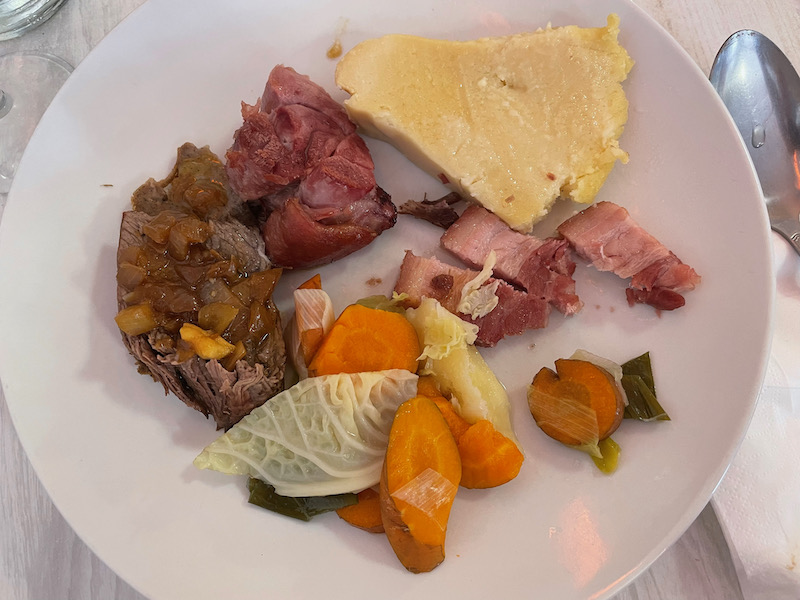Our Blog - Lanrivoaré, France
The town of Lanrivoaré takes its name from the Breton word "lann" meaning hermitage and "Rivoaré", the name of the saint that this church is dedicated to. Legend says that Saint Rivoaré had a small community of migrants that were were killed by pagans and the bodies were buried in the Cemetery of Saints, at the foot of the present church. The church is located in a parish enclosure that also includes the communal cemetery, a 17th century calvary, and the Saints Cemetery. The building, in the shape of a cross, dates from 1583 with modifications in 1727 and 1744. Here you can see the church with bell-tower, the calvary, and one of the cemeteries. The bell tower is a little interesting in that the access to the bell tower is from the outside (there are no interior stairs like in most bell-towers). It has a gallery surmounted by two bell chambers and an octagonal, openwork hooked spire.
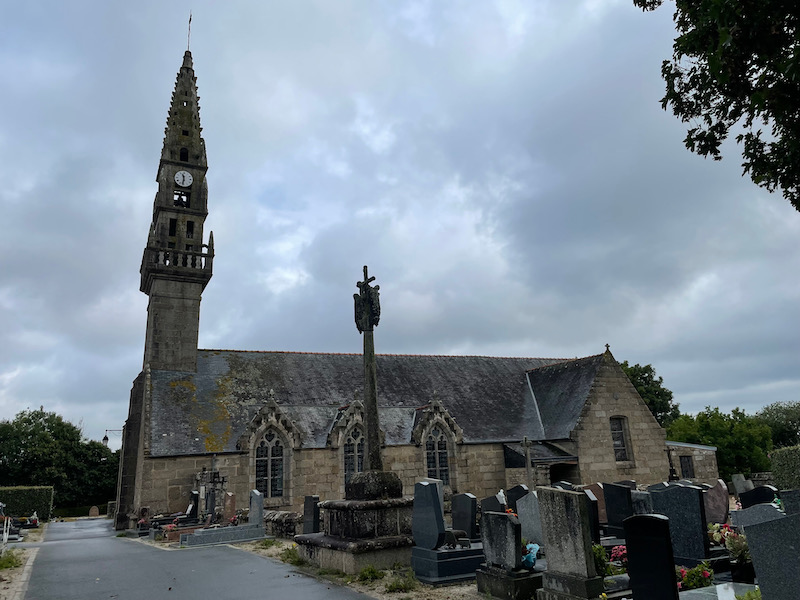
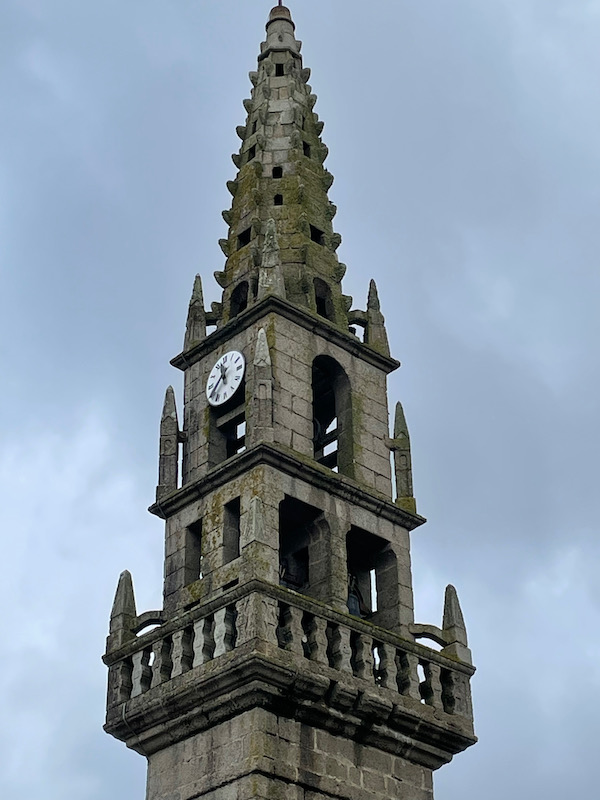
The nave has four bays with aisles and semicircular arches. It has the traditional wooden ceiling in the shape of an inverted boat, but here you can see that the beams are painted the same blue color as the ceiling, which is a bit different than normal. On one side is the baptismal font under a highly-carved wooden canopy.
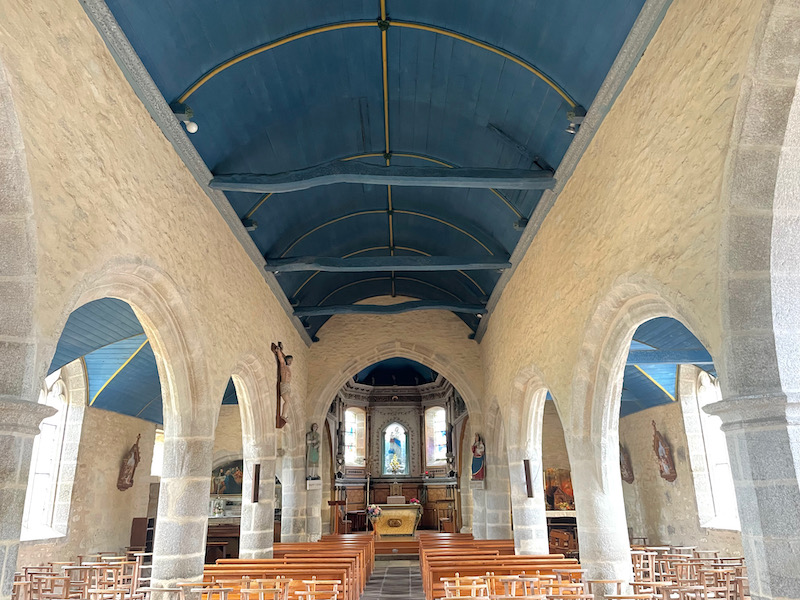
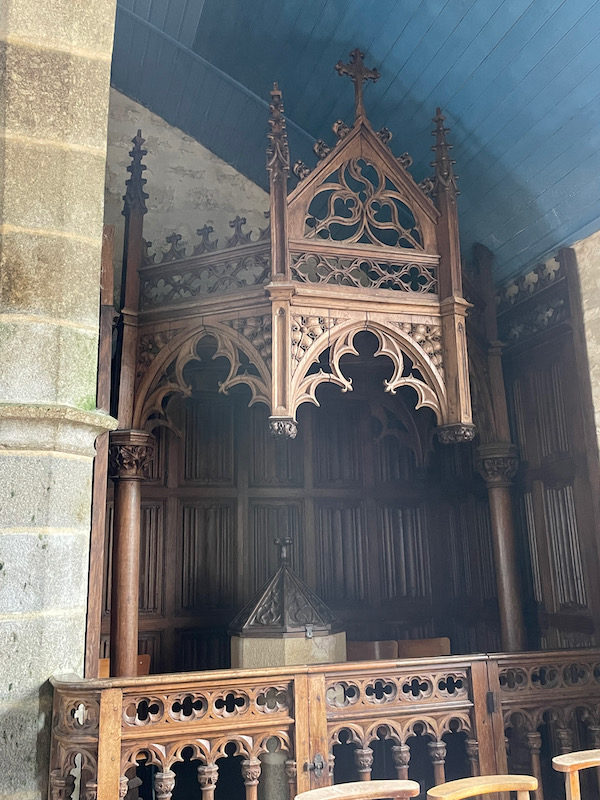
The main altar, in the shape of a curved tomb, sits in front of a windowed niche containing a Virgin and Child.
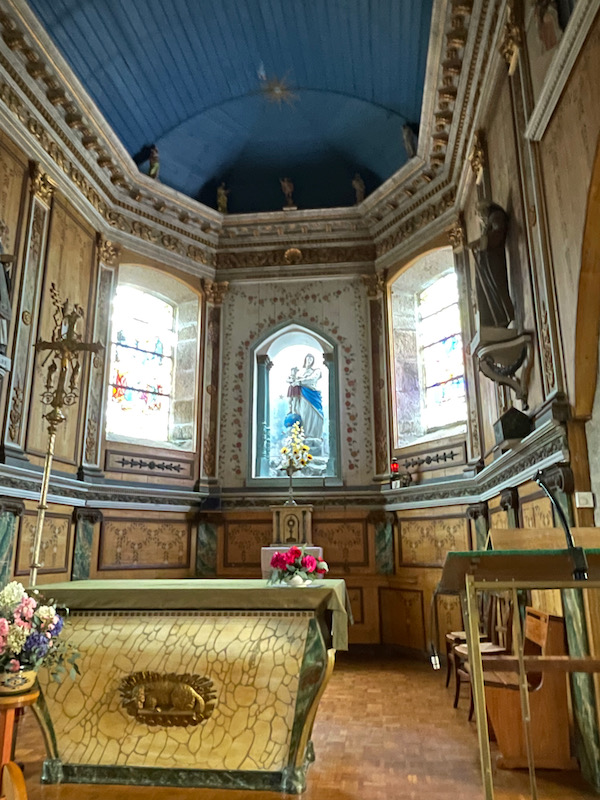
In the north wing is this altarpiece. The painting depicts the Holy Trinity above a pope and a Bible character showing an Old Testament. The altarpiece has four fluted columns framing two statues: the Virgin Mary on the left and St. Michael knocking down the dragon of Evil on the right.
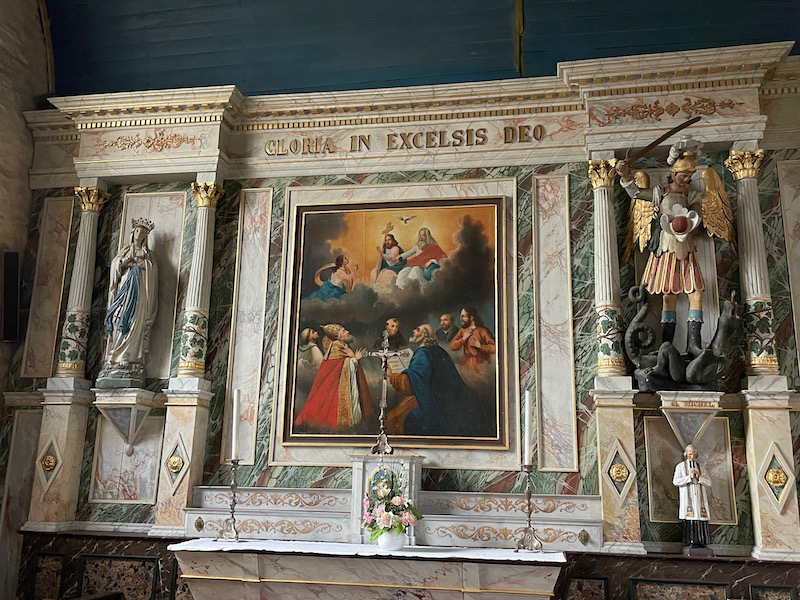
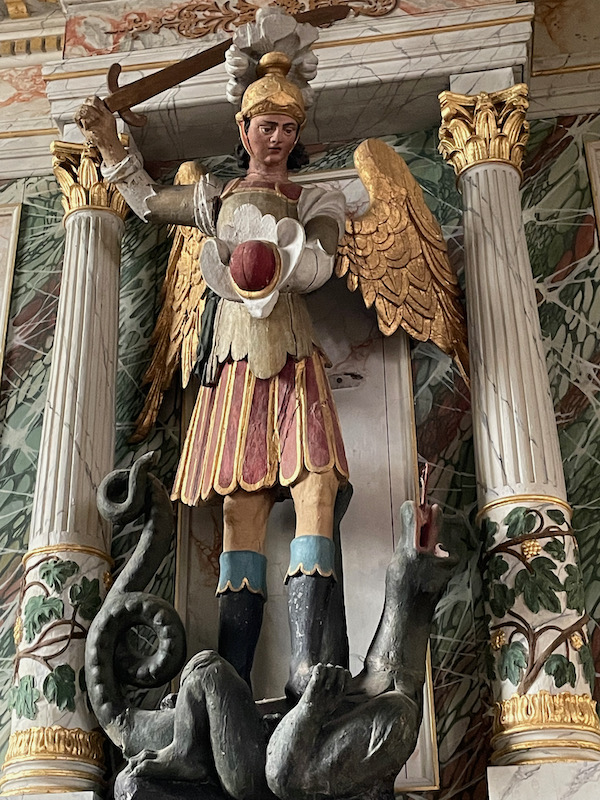
The stained-glass windows date from 1887 and this one represents the Ascension.
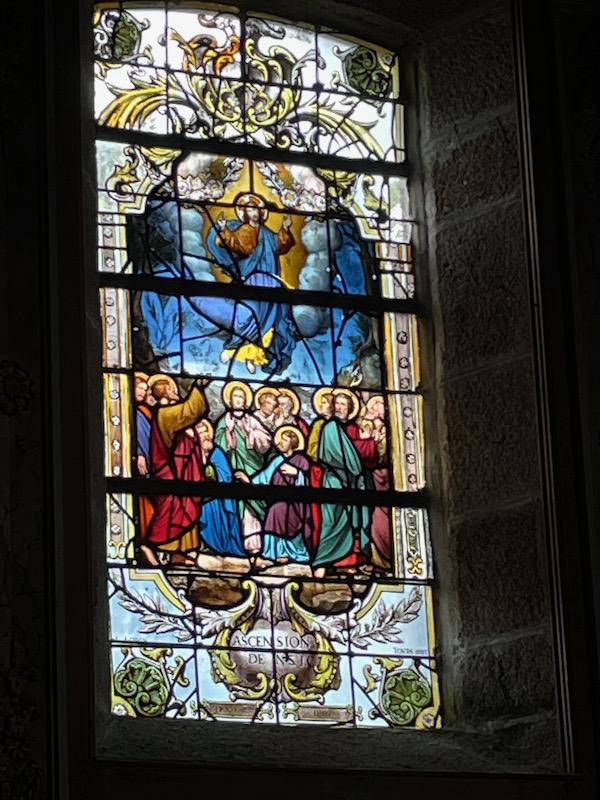
We don't always discuss food in these blogs, but I do when it is something very traditional. One day, we ended up eating at this restaurant that, from the outside, looked like a dive, and didn't improve that much on the inside. But it was PACKED for lunch and there was basically only one thing on the menu .... kig ha farz. It is a traditional meal in this part of Brittany, similar to a pot-au-feu, and used to be peasant food. The name in Breton literally means "meat and stuffing". Various types of meat (pork knuckle, beef), carrots and cabbage, and the "stuffing" are simmered together in a large pot of broth. The "stuffing" on this plate is the yellowish blob, and it is a buckwheat stuffing made from buckwheat flour, eggs, and milk which is put in a cloth bag and also cooked in the pot of broth with the rest. It can come in two forms: "black", which is more savory, and this "white", which is a bit sweeter. Definite comfort food!
